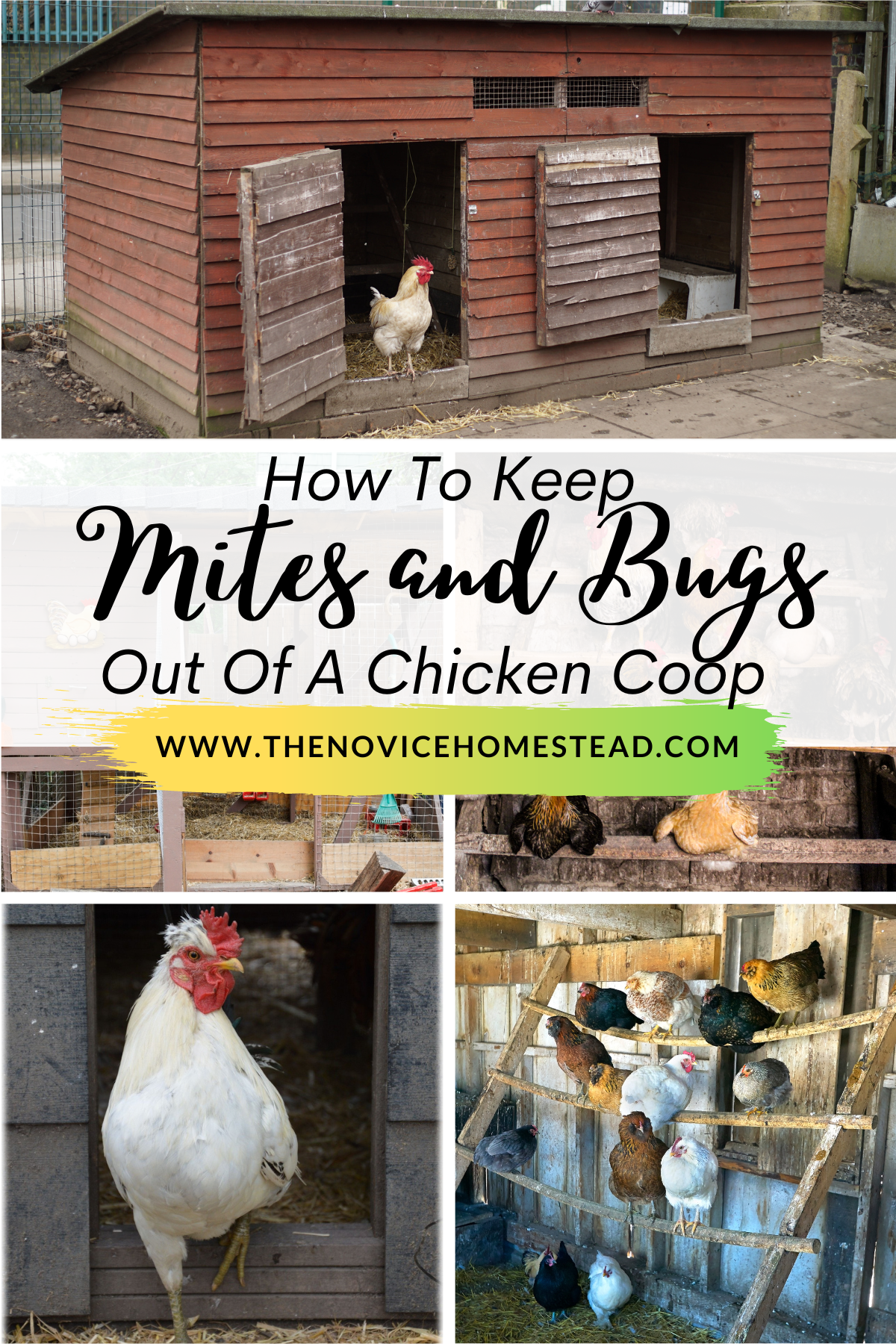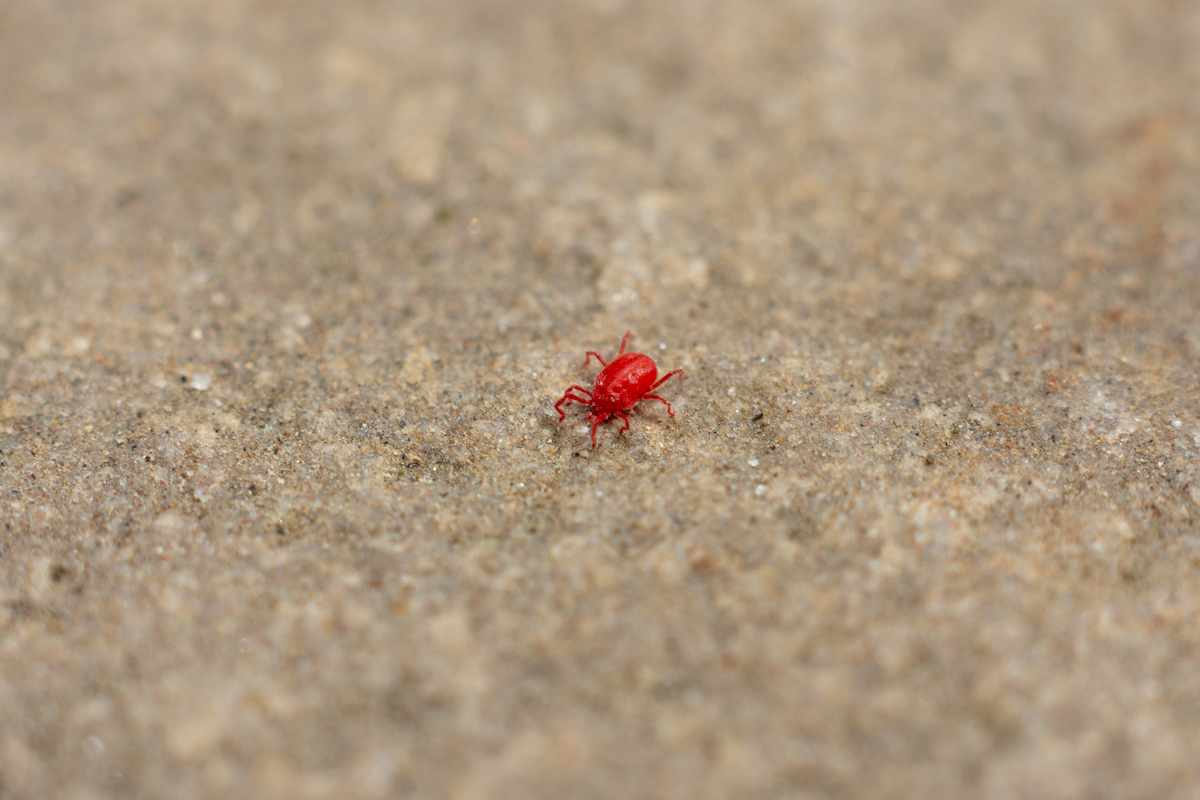Mites are one of the most common pests that affect chickens and can be dangerous if left untreated. Keep reading to learn how to keep mites out of a chicken coop and keep your flock safe and healthy!

What Are Mites?
Mites are tiny, eight-legged arachnids that are related to spiders and ticks – they are technically not insects, even though they may look like bugs at a first glance. There are over 50,000 species of mites, and they can be found in a variety of habitats, including soil, water, and on plants and animals.
While some mites are beneficial, there are a few mites that specifically affect chickens in a negative way. These mites live in and around chicken coops, on chickens themselves, and feed on chickens’ blood. When left untreated, they will multiply and can cause harm to your flock.
There Are Three Main Types of Mites That Affect Chickens:
- Northern Fowl Mites: Also known as red mites, these are small, red mites that live on chickens. They are most active at night, feeding on the blood of chickens. Northern fowl mites can cause chickens to become restless, lose weight, and have a poor feather quality. They can also spread diseases to chickens.
- Chicken Mites: Also known as red poultry mites or roost mites, these are similar to northern fowl mites, but are slightly smaller. Despite the name “roost mites,” they also live on chickens themselves and feed on their blood. They are also most active at night.
- Scaly Leg Mites: These are tiny mites that burrow into chickens’ legs, between and underneath the scales. Left untreated, they can cause irritation, lameness, and even deformities.
What Do Mites Do To Chickens?
At best, mites are an annoyance. At worst, they can be dangerous or even deadly to your flock.
Since mites feed on the blood of chickens, a large infestation can cause anemia (severe blood loss). This can make chickens weak and lethargic. If left untreated, it can cause affected chickens to become ill or die.
Mites also cause skin irritation. They may cause your chickens to itch, scratch, or peck at themselves. This can lead to feather loss, irritation, or open sores.
As you can see, it is important to monitor your coop and your birds for signs of mites and treat immediately. However, it is even more helpful to put measures in place to deter mites from taking up residence in the first place.
How Do You Know If Your Coop Has Mites?
Poultry mites are tiny, and may look like little grey or red dots, so they can be tricky to spot. They also hide in the cracks in the walls or floor of a chicken coop, coming out at night to feed. This makes them even more difficult to find unless you’re carefully looking for them.
If you suspect mites in your coop, try going out to the coop at night with a flashlight. Shine the light into the corners of the coops or around the roost bars. You may catch the mites off-guard, as they are coming out to feed.
Even if you haven’t found mites, it’s a good idea to take preventative measures, such as the steps listed below.

How To Prevent Mites In A Chicken Coop
- Keep your coop clean and dry – Mites thrive in moist, humid environments. Damp or soiled bedding should be removed as soon as possible, as this creates a safe haven for mites. Proper ventilation is also key to help keeping the coop dry. I add a layer of barn lime to the floor of my coop after I clean and before I add pine shavings. This lime helps keep the coop dry and it also deters mites.
- Provide a dust bath for your chickens – It sounds funny, but chickens will “bathe” themselves in loose dirt or sand to keep cool and remove parasites. If you have sand as the base of your run, they will use this for their bath. You can also create a dust bath for them using a container (such as a litterbox) filled with sand. Add diatomaceous earth to your dust bath for even more bug-busting power!
- Inspect your chickens regularly – Checking your birds regularly for signs of mites or other parasites can prevent a small issue from turning into a big problem. Signs of mites include: small red or black insects crawling on your chickens’ skin, small red or black spots on their skin, raised scales on the legs, feather loss, or skin irritation.
- Quarantine new flock members – Always quarantine any new birds, both young chicks or mature birds, for 2 weeks before integrating with your existing flock. New chickens can bring mites or diseases with them. A quarantine protects your other birds and gives you time to inspect and treat new additions.
- Keep other animals out of the coop and run – Other pests, such as rodents and spiders, can carry mites. Wild birds can also harbor parasites and diseases. That’s why it’s important to keep your coop clean and secure, so other animals can’t gain access.
- Clean roost bars regularly – As the name implies, Roost Mites live in and around the roost bars in your coop. They may hide in the seams between wooden bars or beams. Then at night, they crawl from the roost onto your chickens. Spraying the roost bars with pyrethrin will eliminate existing mites and deter new ones from coming back. It’s also a good idea to regularly scrape off any poo that’s crusted onto the roost bars.
- Treat the coop with pyrethrin spray – Pyrethrins are naturally occurring insecticides found in chrysanthemum flowers. They are effective against a wide range of insects, including mites, mosquitoes, fleas, flies, and moths. Since pyrethrins are relatively safe for humans and other animals, they are a popular form of pest control. I mist the inside of the coop after I clean it every week, while my chickens are outside. Note: pyrethrins are toxic to cats, so do not use in any area that cats live or frequent. This can also be helpful for keeping flies out of a chicken coop!
My Favorite Tools For Preventing Mites:
Note: We’ve included shop-able ad links to products we love and use; read our disclosure policy here.
- Dust bath with diamotaceous earth
- Barn lime for the coop floor
- Pyrethrin spray
More Tips For Raising Chickens:
- Guide to Raising Baby Chicks
- What is Pasty Butt in Baby Chicks?
- When Do Chickens Start Laying Eggs?
- How Often Do Chickens Lay Eggs
- How Cold is Too Cold for Chickens to be Outside?
- Farm Fresh Eggs 101
- How to Keep Chickens Cool in the Heat
- How to Keep Snakes Out of a Chicken Coop
- How to Keep Chickens From Eating Their Own Eggs
- What is Fowl Pox?